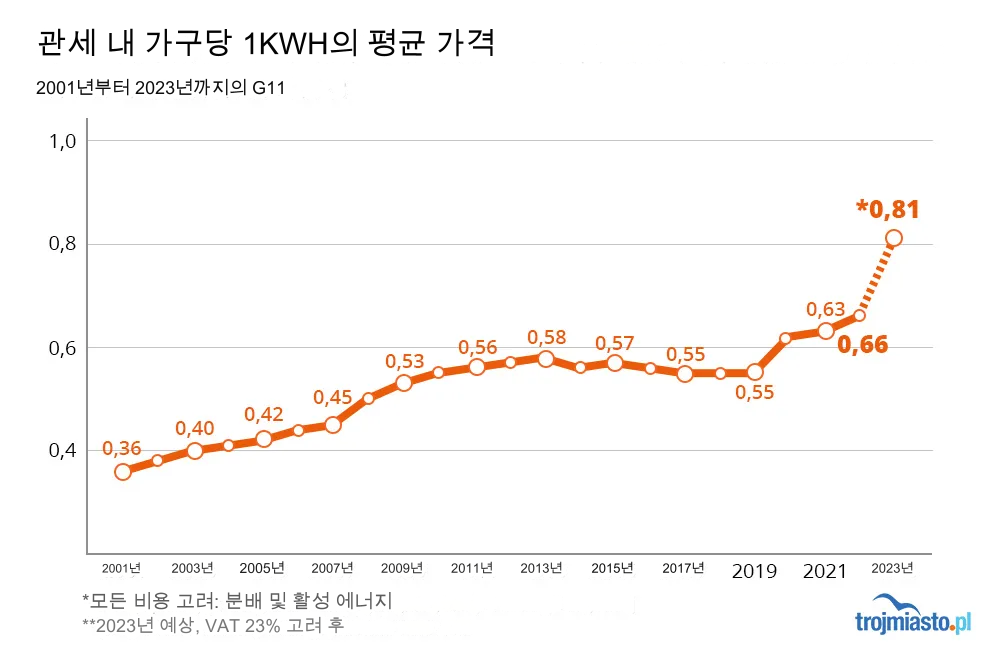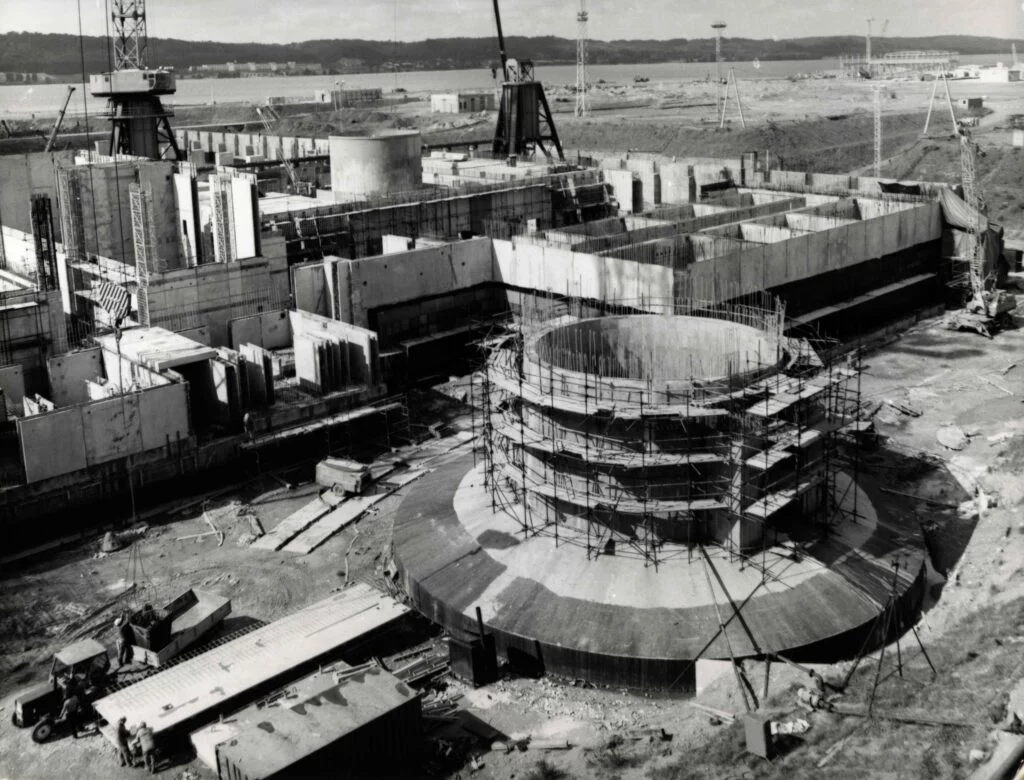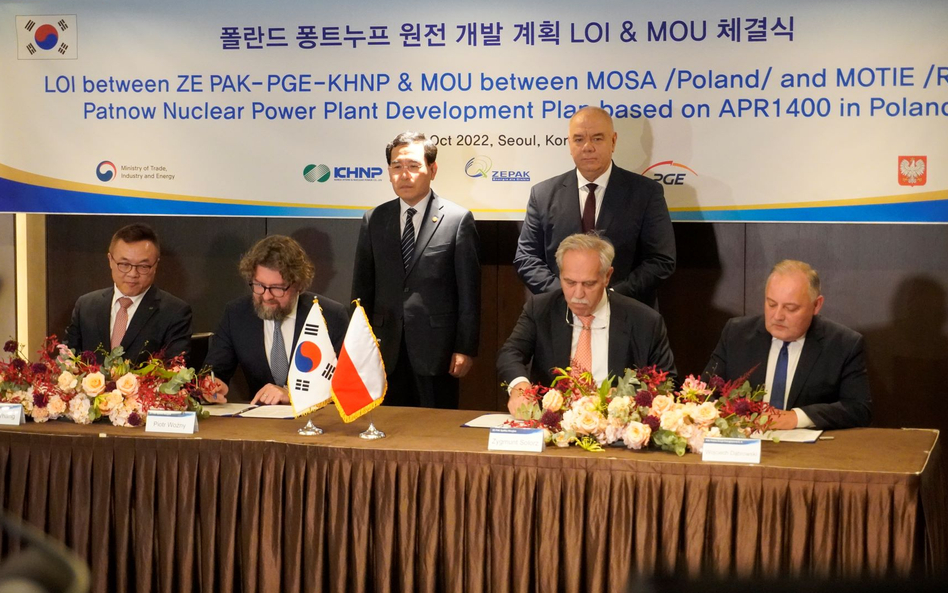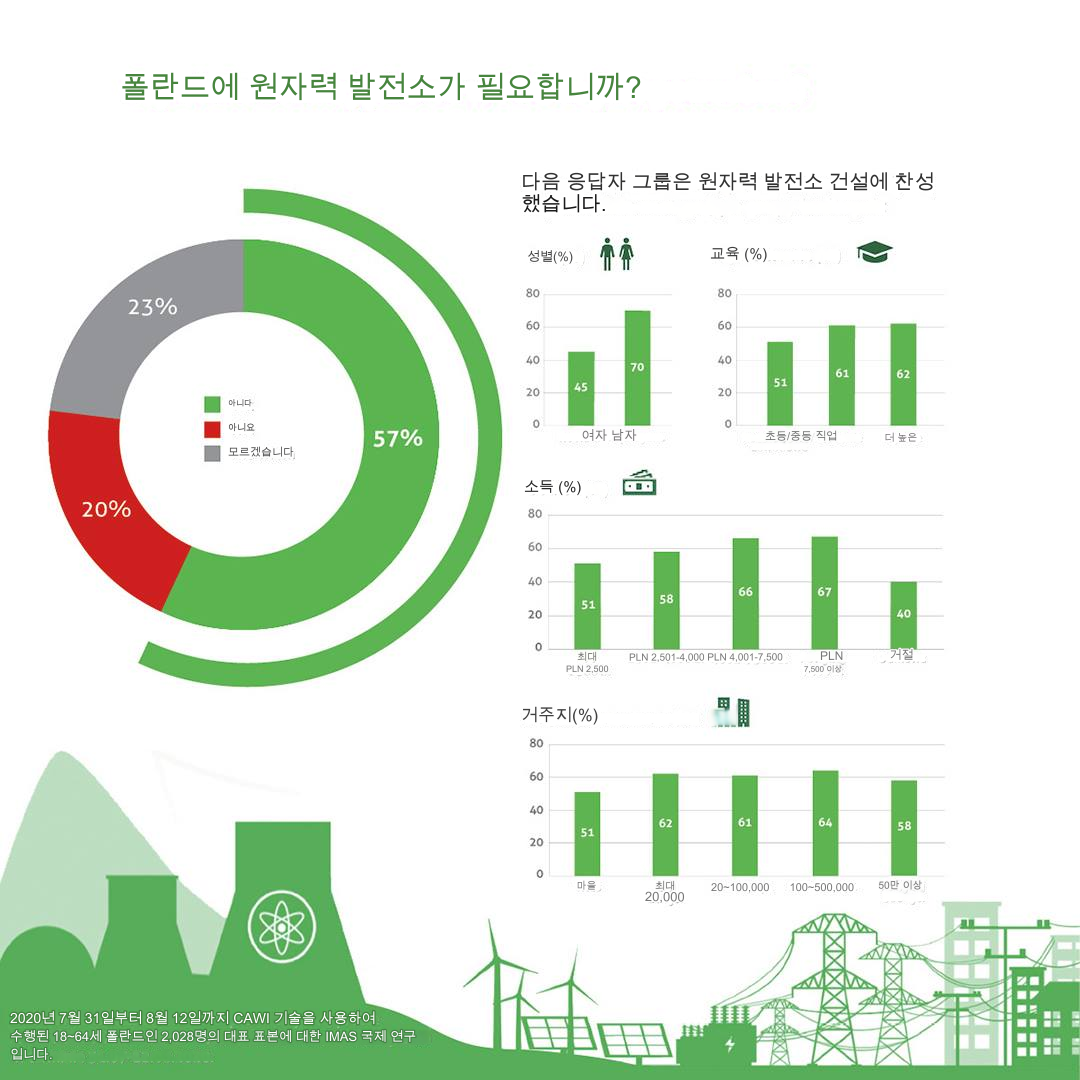2024-05-19
Poland’s Nuclear Energy Ambitions: A Shift Toward South Korean Partnership
Poland, like many countries, faces an urgent need to secure a reliable and sustainable energy supply. As it continues to grow economically and industrially, the country’s energy demands are rising sharply. The challenge lies not only in meeting current needs but also in ensuring long-term energy security and reducing reliance on fossil fuels, which pose significant environmental risks. In response, Poland has increasingly looked to nuclear power as a vital component of its energy strategy. A nuclear power plant could potentially stabilize and lower energy costs, addressing concerns over rising electricity prices shown in the graph below.

Increase in average prices of 1 kWh of electricity in the years 2001-2023. (source: trojmiasto.pl)
Over the years, various Polish governments have proposed and planned the construction of nuclear power plants to address these needs. This reflects a broader recognition of nuclear energy’s potential benefits, including its ability to provide a stable and substantial supply of electricity with lower carbon emissions compared to fossil fuels. The drive for nuclear power aligns with a strategy to modernize Poland’s energy infrastructure and enhance its energy independence, as evidenced by ongoing discussions and plans such as the Żarnowiec Nuclear Power Plant project, the 2009 nuclear power plant plan, and broader developments in nuclear energy within Poland.
Interestingly, Poland’s interest in nuclear power is not new. Even during the era of the Polish People’s Republic, there were ambitious plans to incorporate nuclear energy into the national energy mix. The government at the time saw nuclear power as a cornerstone of Poland’s energy strategy, highlighting its long-term commitment to this technology. These early ambitions, particularly the ones behind the Żarnowiec project, laid crucial groundwork for today’s nuclear discussions. Insights into these historical efforts can be found in the detailed account of the Żarnowiec plan, with further context provided by a documentary segment exploring their lasting impact.

Construction site of the nuclear power plant in Żarnowiec (source: State Archives in Gdańsk)
In recent developments, the Polish government has actively pursued the construction of nuclear power plants, with a notable focus on partnering with South Korea. Among the offers from major contenders like the United States and France, South Korea’s proposal has emerged as the frontrunner. The appeal lies in its competitive pricing, advanced technology, and attractive offset deals, which have been key factors in Poland’s decision-making process. A closer look at the competing bids highlights why South Korea’s offer stands out, especially when considering the potential benefits for Poland’s nuclear ambitions, as discussed in detailed analyses.

PGE and ZE PAK have signed a letter of intent with Korea Hydro & Nuclear Power regarding cooperation on the nuclear power plant construction project (source: ZE PAK)
The South Korean bid has been praised for its cost-effectiveness and the comprehensive support package it includes. This package offers not only the construction of the plants but also technology transfer and local economic benefits, making it a compelling choice for Poland. The competitive edge of the South Korean proposal—especially in comparison to the more expensive options from the U.S. and France—has been a decisive factor. It promises both high-quality nuclear technology and significant economic benefits, aligning with Poland’s strategic goals for energy independence and modernization.
Public support for nuclear energy in Poland is notably strong. A recent survey reveals that a significant majority of Poles favor the construction of nuclear power plants, underscoring the widespread public backing for this energy solution. This growing acceptance is reflected in detailed reports, which show a clear majority of Poles supporting nuclear energy initiatives, as well as government findings that confirm this trend.

57 percent of Polish women and men support the construction of a nuclear power plant (source: gov.pl)
However, the momentum for these nuclear projects has encountered a slowdown since the 2023 elections. The victory of the KO (Koalicja Obywatelska) in the elections has led to a reassessment of the energy plans previously established. Recent statements by KO leader Donald Tusk suggest a potential halt in the construction of the nuclear power plants. The new government’s more cautious approach has caused delays in implementing the nuclear power projects, pushing back the ambitious timeline for their construction. This shift reflects the evolving priorities and policies of the current administration.
South Korea has recently achieved a significant milestone in its nuclear energy program with the commencement of operations for its fourth APR-1400 reactor. This latest addition to the APR-1400 series, known for its high efficiency and enhanced safety features, highlights South Korea’s leadership in nuclear technology. The successful launch of this reactor underscores South Korea’s continued investment and expertise in nuclear power, further solidifying its role as a key partner for countries like Poland in their nuclear energy ventures.
The operational start of the APR-1400 reactor not only showcases South Korea’s advanced capabilities in building and managing state-of-the-art nuclear facilities but also emphasizes the technological sophistication and reliability that South Korea brings to its international partnerships. The APR-1400 is a prime example of South Korea’s commitment to cutting-edge nuclear technology.

Shin Hanul units 1 and 2 (source: KHNP)
Despite recent setbacks and delays, only time will tell how successfully South Korea will proceed with the construction of nuclear power plants in Poland. The solid partnership between Polish and South Korean entities, along with South Korea’s expertise in nuclear technology, lays a strong foundation for overcoming obstacles. Both countries are committed to this critical project, and the collaboration could yield significant advancements in Poland’s energy infrastructure. Hopefully, the nuclear project will be as successful as the recent defence contracts between Poland and South Korea.

